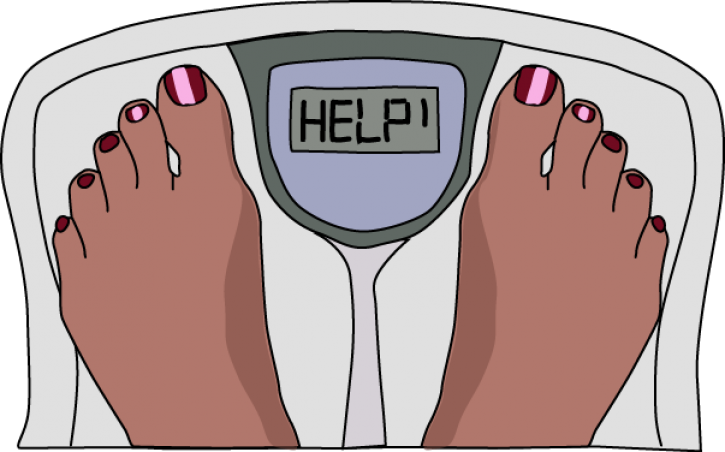NJ Fitness and Wellness Training Centers
Are you looking for more info about Extraordinary Fitness and Health in New Jersey?
Want to know more about Full Body Fitness Training for Health in the Central NJ Area?
You are in the right place when it comes to The NJ Ultimate Fitness Center and Best Fitness and Health Training Gym NJ ...
NJ Fitness and Health Center
Extraordinary Fitness and Health NJ-Using Full Body Exercises
Learn More About NJ's Ultimate Fitness Center And Why The Full Body Exercise Program Can Work For You.
Ready to get fit, lose weight and get healthy? Contact us to learn more about our unique Full Body Workouts for health and fitness program.
Full Body Training for Healthy Weight Loss Toms River---Plus Get A 2 Week FREE PASS!
Looking for the Fitness and Heath Experts in NJ? Perhaps You Are Searching Everywhere For...
- Fast Weight Loss NJ
- Extraordinary Fitness and Health NJ
- NJ Top Full Body Training
- Fitness Training for Health NJ
- NJ Ultimate Fitness Full Body Training Gym
Your Search is Over!

ABOUT US
FITNESS
DIET AND NUTRITION
Wellness is a combination of physical fitness and feeding your body with the right nutritional diet.
MOTIVATION
NJ Fitness and Health FAQ

New Jersey Fitness and Health
COMMON QUESTIONS ANSWERED...
When Is The Best Time Of Day To Exercise?
Answer...
Morning Exercise May Offer the Most Weight Loss Benefits
In a study, people who worked out before noon lost more weight, on average, than those who typically exercised after 3 p.m.
People who exercise in the morning seem to lose more weight than people completing the same workouts later in the day, according to a new study of workouts and waistlines. The findings help shed light on the vexing issue of why some people shed considerable weight with exercise and others almost none, and the study adds to the growing body of science suggesting that the timing of various activities, including exercise, could affect how those activities affect us.
The relationship between exercise and body weight is somewhat befuddling. Multiple past studies show that a majority of people who take up exercise to lose less weight drop fewer pounds than would be expected, given how many calories they are burning during their workouts. Some gain weight.
But a few respond quite well, shedding pound after pound with the same exercise regimen that prompts others to add inches.
This variability interests and puzzles Erik Willis, a data analyst with the Center for Health Promotion and Disease Prevention at the University of North Carolina at Chapel Hill. For almost a decade, he and colleagues at the University of Kansas, the University of Colorado Denver and other institutions have overseen the Midwest Exercise Trial 2, an extensive examination of how regular, supervised exercise influences body weight.
After 10 months of this regimen, almost everyone had dropped pounds. But the extent of their losses fluctuated wildly, even though everyone was doing the same, supervised workouts.
When, for a 2015 study, the researchers tried to tease out what had distinguished the biggest losers from those who had lost less, they turned up surprisingly few differences. In line with other recent studies, they found that some participants, especially men, had begun eating more than before the study, but only by about 100 calories or so a day.
Flummoxed, Dr. Willis and one of his collaborators, Seth Creasy, a professor of exercise physiology at the University of Colorado Denver’s Anschutz campus, started brainstorming other possible, perhaps unexpected contributors to the enormous variability to weight loss.
They hit upon activity timing.
The science of chronobiology, which studies the ways in which when we do something alters how our bodies respond, is of great interest now. Many recent studies have looked at how meal timing, for instance, affects weight control, including whether exercising before or after breakfast matters. But far less has been known about whether the timing of exercise, by itself, influences whether people lose weight with workouts.
So, for the new study, which was published in July in The International Journal of Obesity, Dr. Willis and his colleagues sifted through their data again, this time looking at when people in the Midwest trial had shown up at the university lab.
In that study, participants could visit the gym whenever they wished between 7 a.m. and 7 p.m., signing in each time, so researchers had plenty of precise information about their schedules. The scientists also had tracked everyone’s calorie intakes and daily movement habits throughout the 10 months, using activity trackers and liquid energy tracers. They knew, too, whether and by how much people’s weights had changed.
Now, they checked weight change against exercise schedules and quickly noticed a consistent pattern.
Those people who usually worked out before noon had lost more weight, on average, than the men and women who typically exercised after 3 p.m. (For unknown reasons, very few people went to the gym between noon and 3.)
The researchers uncovered a few other, possibly relevant differences between the morning and late-day exercisers. The early-exercise group tended to be slightly more active throughout the day, taking more steps in total than those who worked out later. They also ate a bit less, although the difference amounted to barely 100 calories per day on average. Over all, such differences were barely discernible.
Yet, they may cumulatively have contributed to the striking differences in how many pounds people lost, Dr. Willis says.
Of course, this study was not large or designed from the start to delve into the chronobiology of exercise and weight. The researchers had not randomly assigned people to work out at particular times, so the links between exercise timing and weight loss they saw now in their re-analysis could be odd accidents related to individual participants’ preferences and schedules with little relevance for the rest of us.
Still, the statistical associations were strong, Dr. Willis says. “Based on this data, I would say that the timing of exercise might — just might — play a role” in whether and to what extent people drop pounds with exercise, he says.
But he also points out that most of those who worked out later in the day did lose weight, even if not as much as the larkish exercisers, and almost certainly became healthier.
“I would not want anyone to think that it’s not worth exercising if you can’t do it first thing in the morning,” he says. “Any exercise, at any time of day, is going to be better than none.”
Supplied by NYTimes-


How Do You Keep Yourself Physically Fit?
Answer...
Aerobic Exercise
Aerobic or cardiovascular exercises like brisk walking, jogging, swimming and bicycling help strengthen your heart because it keeps it pumping at a higher rate for an extended period of time. Aerobic activities also help manage blood pressure and cholesterol, strengthen the spine and prevent weight gain while improving your energy level and simply making you feel good
Anaerobic Exercise
While aerobic exercise involves lower intensity sustained for several minutes or even hours,
anaerobic exercises are short and fast, and they help increase muscle strength. Activities that involve quick bursts of energy such as sprinting or heavy weightlifting are defined as anaerobic. A combination of aerobic and anaerobic exercises are needed for the development of physical fitness.
Strength Training
Strength or resistance training can build stamina and help replace body fat with lean muscle mass, which encourages your body to burn calories more efficiently. Strength training also helps counteract muscle loss associated with aging. Pushups, pullups, lifting free weights or working out on weight machines are all examples of resistance-training activities. Exercises that work the major muscle groups should be performed two or three times per week for best results.
Stretching
Stretching is an important element in a fitness program. Stretching your body two or three times a week or after each aerobic or strength training workout can improve circulation and range of motion in your joints. Stretching can even promote better posture and relieve stress. Yoga poses, dancing, and touching your toes can effectively stretch your body.
Fruits and Veggies
A healthy diet that includes plenty of fruits and vegetables can promote physical fitness because it relaxes blood sugar that can help prevent overeating, explains Harvard School of Public Health. Most people should aim for at least 4 cups of fruits and veggies each day. Good choices include spinach and other dark leafy vegetables, or any produce that's red such as raspberries and bell peppers, or yellow or orange like melons, bananas and carrots.
Article found on Quora-written by
Mark Liam, Weight Loss Instructor, Personal Trainer and Fitness Specialist
Learn More About The NJ Fitness and Health Gyms
CALL US AT: 732-338-0405
Additional Extraordinary NJ Fitness and Health TIPS...
Tip #1: Health Benefits of Physical Activity
Privacy & Trust Info
The benefits of exercise extend far beyond weight management. Research shows that regular physical activity can help reduce your risk for several diseases and health conditions and improve your overall quality of life. Regular physical activity can help protect you from the following health problems.
Heart Disease and Stroke.
Daily physical activity can help prevent heart disease and stroke by strengthening your heart muscle, lowering your blood pressure, raising your high-density lipoprotein (HDL) levels (good cholesterol) and lowering low-density lipoprotein (LDL) levels (bad cholesterol), improving blood flow, and increasing your heart's working capacity. Optimizing each of these factors can provide additional benefits of decreasing the risk for Peripheral Vascular Disease.
High Blood Pressure.
Regular physical activity can reduce blood pressure in those with high blood pressure levels. Physical activity reduces body fat, which is associated with high blood pressure.
Noninsulin-Dependent Diabetes.
By reducing body fat, physical activity can help to prevent and control this type of diabetes.
Obesity.
Physical activity helps to reduce body fat by building or preserving muscle mass and improving the body's ability to use calories. When physical activity is combined with proper nutrition, it can help control weight and prevent obesity, a major risk factor for many diseases.
Back Pain.
By increasing muscle strength and endurance and improving flexibility and posture, regular exercise helps to prevent back pain.
Osteoporosis.
Regular weight-bearing exercise promotes bone formation and may prevent many forms of bone loss associated with aging.
Self Esteem And Stress Management.
Studies on the psychological effects of exercise have found that regular physical activity can improve your mood and the way you feel about yourself. Researchers have found that exercise is likely to reduce depression and anxiety and help you to better manage stress.
Disability.
Running and aerobic exercise have been show to postpone the development of disability in older adults.
Keep these health benefits in mind when deciding whether or not to exercise.
Article found at https://www.medicinenet.com/script/main/art.asp?articlekey=12507
Check Below For Additional Tips On...Fitness, Diet and Nutrition and Motivation
CONTACT NJ Fitness and Health
NJ Fitness and Health
1580 Lakewood Road
Toms River New Jersey 08755
Ready to get fit, lose weight and get healthy? Contact us to learn more about our unique health and fitness program.

